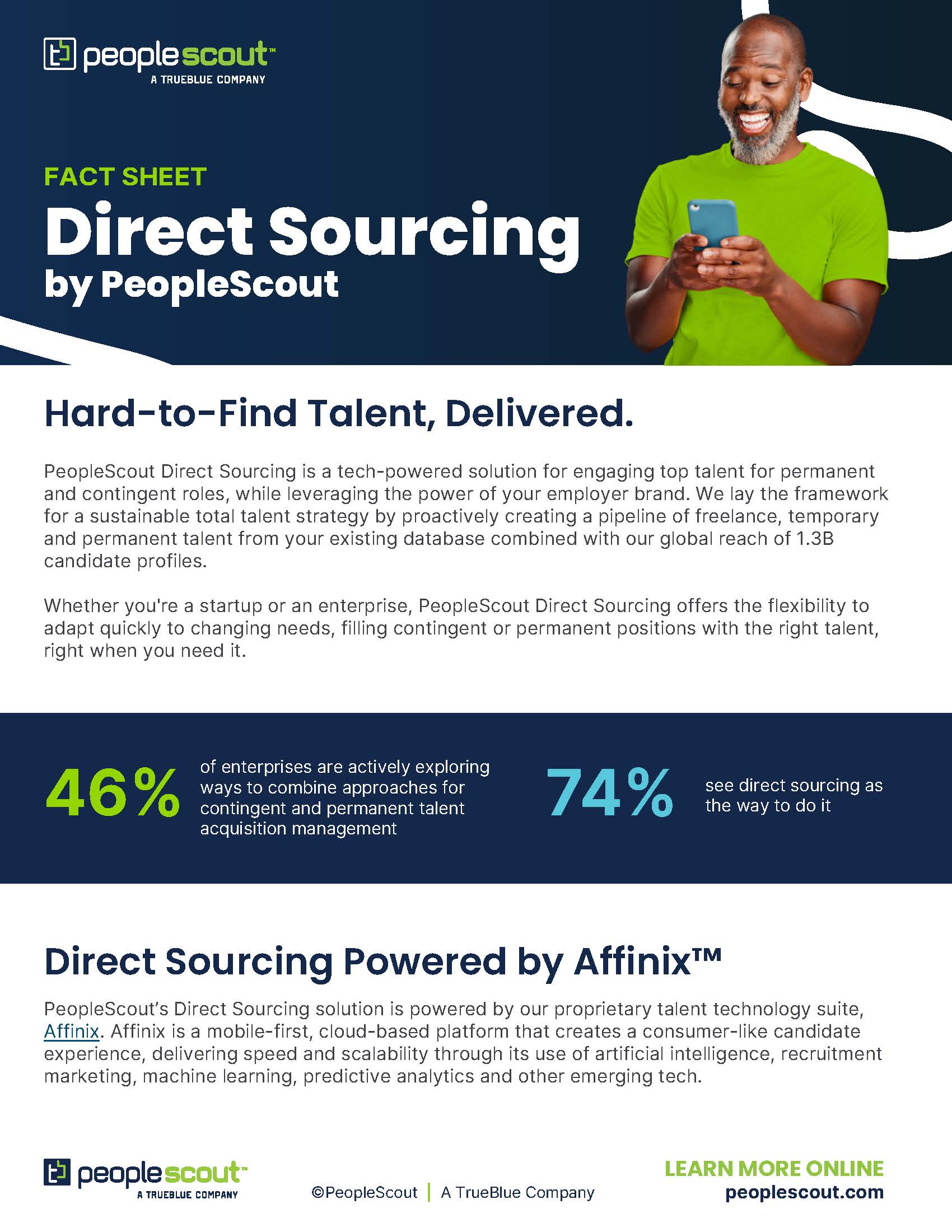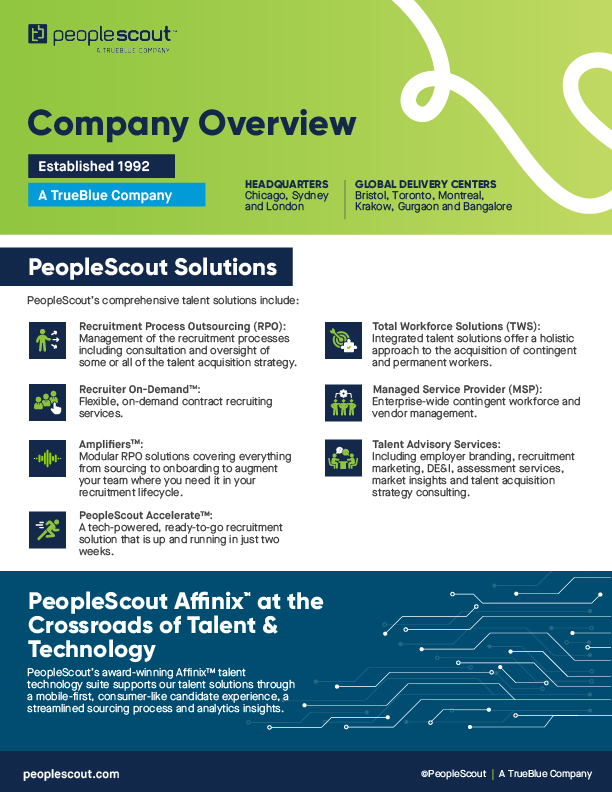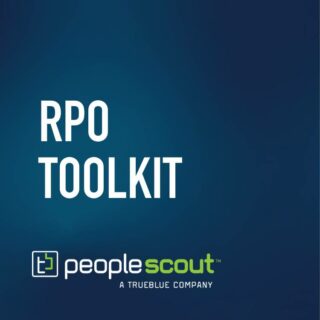Direct sourcing is a pivotal strategy in talent acquisition that empowers organizations to proactively identify, attract and engage top talent. With the growth of the gig economy and blurring of lines between full-time and temporary employment, workers who traditionally seek full-time employment are increasingly willing to take up temporary placements—and vice versa. Organizations that create and nurture blended talent pools of both permanent and contingent workers through direct sourcing best practices can bypass traditional recruitment channels and connect with top talent in a more personalized and efficient manner.
Here are seven direct sourcing best practices to successfully implement direct sourcing as part of your talent acquisition strategy:
1. Focus on Your Employer Brand
A strong employer brand showcases what makes your company unique and appealing, serving as a powerful magnet for skilled professionals seeking temporary, project-based and full-time work. Investing in your employer brand pays dividends in direct sourcing by reducing time-to-hire, improving the quality of candidates and enhancing candidate engagement. Moreover, it helps build trust and credibility with potential workers, making them more likely to choose your organization over competitors.
To build an effective employer brand, start by developing a compelling employer value proposition (EVP) that highlights the distinct advantages of working with your organization. This should encompass your company’s values, culture and the unique opportunities you offer. Consider factors such as flexible work arrangements, challenging projects and professional development opportunities. Communicate these elements clearly and consistently across your website, social media platforms, email nurture campaigns and other channels to create a cohesive brand image.
With 41% of companies expecting to increase their use of contingent workers, it’s important to ensure that your EVP applies to both your temporary and permanent employees. Have you formally defined the value proposition for contractors? Contingent workers are a part of your cultural DNA and deserve the same experience as full-time workers. It may help to shift from using the term EVP, which implies the value is only experienced by those you employ directly, to using Worker Value Proposition (WVP) to make it more inclusive. Direct sourcing can help that drive that connection to the employer brand —regardless of classification.
2. Implement Robust Technology
Technology forms the second cornerstone of successful direct sourcing, providing the essential infrastructure for implementing and optimizing sourcing strategies. In fact, the effectiveness of most of our direct sourcing best practices hinges on the availability and proper utilization of advanced technology tools.
Look for solutions that offer AI-powered matching capabilities, which can dramatically improve the speed and accuracy of candidate selection. For example, PeopleScout’s Direct Sourcing is a tech-powered solution that helps you rediscover candidates who are already in your candidate database with the use of AI. Affinix®, our proprietary total talent suite, compares your job description against profiles in your database and identifies a list of the best candidates—whether they’re previous applicants, individuals who have filled out an expression of interest form for the role, or silver/bronze medalists from previous requisitions. You receive a weighted score for each candidate (based on previous job titles and experience, skills profile and management experience) along with a written summary. Your hiring manager can then determine which candidates they want to pursue immediately, and which to add to a talent pool, where they’ll receive additional outreach before being invited to apply.
We can also use our AI smart search technology to tap into 1.3 billion candidate profiles across multiple external talent databases. This vastly expands your access to talent by identifying strong candidates within seconds of opening a new job requisition.
In addition to outbound channels, PeopleScout’s Direct Sourcing offers technology solutions for inbound sourcing channels including custom careers sites, internal job portals, expression of interest forms and programmatic advertising.
In addition to sourcing capabilities, prioritize platforms with robust automation to reduce manual tasks and free up your team to focus on strategic initiatives. Don’t forget comprehensive analytics to help you continually refine your sourcing strategies, identify trends and measure your efforts.
3. Create Segmented Talent Pools
Creating segmented talent pools is a crucial strategy in effective direct sourcing, allowing organizations to target their efforts more precisely and efficiently. By developing and maintaining pools of both permanent and contingent talent based on skills, experience levels and job types, companies can quickly identify and engage the best candidates for specific roles or projects.
This targeted approach allows for more personalized engagement strategies, tailored communication and faster matching of candidates to opportunities. Through analytics you can develop an understanding of each talent segment’s unique needs and motivations, allowing you to refine your value proposition for different groups. Ultimately, segmented talent pools build stronger connections with candidates, improving the quality of hires and the efficiency of your direct sourcing program.
4. Develop Talent Engagement Strategies
Once you’ve established distinct talent segments, it’s essential to develop and implement engagement approaches that resonate with each group’s unique characteristics and preferences. This personalized approach ensures that your communication is relevant, timely and effective, increasing the likelihood of attracting and retaining top talent for your organization.
Implement a robust CRM and recruitment marketing engine to streamline and automate these engagement processes, allowing for consistent and personalized interactions at scale. Regularly provide updates, feedback, and relevant information to keep candidates engaged and interested, fostering a sense of connection with your organization even before a specific opportunity arises. Your engagement strategy should also span social media, networking events, relevant online platforms, industry associations and SMS to keep your talent pools informed about opportunities and foster connection.
This approach not only helps you cultivate a diverse pool of specialized talent but also positions your organization as an attractive option for skilled professionals. By maintaining active engagement with passive talent, you create a ready pipeline of qualified candidates, enabling you to quickly scale your workforce and access a broad spectrum of skills and expertise when needed.
5. Focus on the Candidate Experience
In the realm of direct sourcing best practices, a positive candidate experience not only enhances your organization’s reputation but also increases the likelihood of successful placements and repeat engagements. Regardless of whether a candidate is up for a permanent or contingent role, they’ll be expecting a mobile-first, streamlined, informative and engaging process from initial outreach through placement.
Focus on transparency and communication throughout the sourcing process. Provide clear, detailed job descriptions and requirements, offer insights into your company culture and set realistic expectations regarding timelines and next steps. A tech-powered solution will feature automation that ensures candidates receive timely responses to their applications and inquiries.
By prioritizing a positive candidate experience, you not only improve your chances of securing top talent but also build a strong employer brand that attracts high-quality candidates to your talent pools over time.
6. Optimize Direct Sourcing Performance
Measuring and optimizing the performance of your direct sourcing program is crucial for long-term success and continuous improvement. To effectively gauge the impact of your efforts, it’s essential to track key metrics that provide insights into various aspects of your sourcing strategy such as time-to-fill, quality of hires, cost per hire, candidate engagement rates and source of hire. Additionally, monitor the size and quality of your talent pools, the effectiveness of your engagement strategies, and the overall satisfaction of both candidates and hiring managers.
Regularly analyzing these metrics will provide a comprehensive view of your direct sourcing program’s performance and highlight areas for improvement. For instance, if you notice a particular talent pool consistently yields high-quality candidates with shorter time-to-fill rates, you might allocate more resources to cultivating that segment. Similarly, if certain engagement tactics result in higher response rates, you can refine your communication strategies accordingly.
Continuously refining your approach based on performance data ensures that your direct sourcing program remains agile and effective, adapting to changing market conditions and organizational needs. Remember, the goal is not just to collect data, but to translate these insights into improvements.
7. Consider Outsourcing to a Talent Partner
While implementing a successful direct sourcing strategy can yield a competitive edge, it requires substantial resources, expertise and ongoing management. This is where a total talent solutions partner can be a game-changer for organizations.
Outsourced total talent solutions providers who offer recruitment process outsourcing (RPO) and managed service programs (MSP) have the advantage of scale and specialization. They continuously invest in the latest sourcing technologies, stay abreast of market trends and refine their strategies based on data from multiple clients across various industries. This expertise enables them to build and manage segmented talent pools more efficiently, implement sophisticated engagement strategies and deliver an outstanding candidate experience.
Moreover, a partner brings consultation to a direct sourcing solution. By evaluating the skills gaps in your organization in line with your anticipated demand, a talent partner can help you develop more formal workforce planning to keep you ahead of the curve. Direct sourcing can play a major role in pipelining talent so you can tap into it at the right time.
This approach not only saves time and costs from staffing agencies, but it also provides access to a broader and more diverse talent pool, enhances employer branding efforts and improves the quality of hires. Ultimately, partnering with a provider to help execute direct sourcing best practices enables organizations to achieve better results faster, positioning them to combine approaches for contingent and permanent talent acquisition management and take steps toward total workforce management.
















